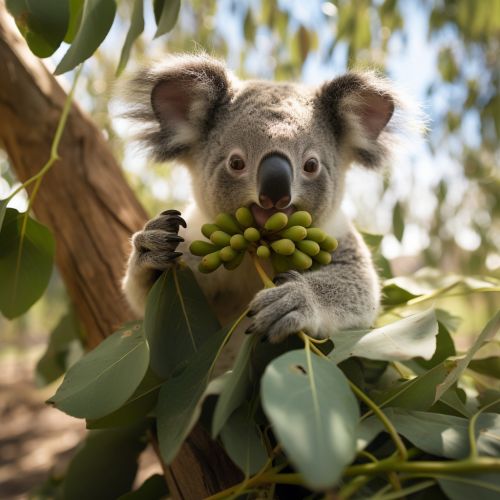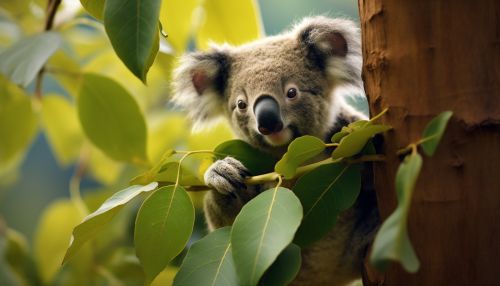Foraging (behavior)
Introduction
Foraging is the act of searching for and exploiting food resources. It is a fundamental behavior in all animal species, including humans. The term is often used to describe the behavior of animals in the wild, but it can also apply to humans in certain contexts, such as hunting and gathering societies. The strategies and techniques used in foraging vary widely among different species and environments, and studying these behaviors can provide valuable insights into animal ecology and evolution.
Types of Foraging
There are several types of foraging strategies that animals employ, each with its own set of benefits and drawbacks. These strategies can be broadly categorized into two types: generalist and specialist foraging.
Generalist Foraging
Generalist foragers, such as raccoons and coyotes, are animals that consume a wide variety of food sources. They are adaptable and can change their diet based on the availability of food in their environment. This flexibility allows them to survive in a variety of habitats and conditions.
Specialist Foraging
Specialist foragers, on the other hand, have a more narrow diet. They specialize in consuming one or a few types of food. For example, koalas primarily eat eucalyptus leaves, and pandas primarily eat bamboo. While this specialization can make them more efficient at finding and consuming their preferred food, it can also make them more vulnerable to changes in their environment that affect the availability of that food.


Foraging Strategies
Different species employ different foraging strategies based on their specific needs and the characteristics of their environment. These strategies can be broadly categorized into solitary and group foraging.
Solitary Foraging
In solitary foraging, animals search for food alone. This strategy is often used by predators such as tigers and eagles, who rely on stealth and surprise to catch their prey. Solitary foragers may also be territorial, defending their foraging grounds from others of their species.
Group Foraging
Group foraging, on the other hand, involves animals searching for food in groups. This strategy can provide several benefits, including increased safety from predators and increased efficiency in finding and capturing food. Examples of group foragers include wolves, who hunt in packs, and ants, who work together to find food and bring it back to their colony.
Foraging Theory
Foraging theory is a branch of behavioral ecology that studies the foraging behavior of animals. It uses mathematical models to predict the optimal foraging strategy that an animal should use to maximize its energy intake.
Optimal Foraging Theory
The optimal foraging theory is a model that predicts an animal's behavior when searching for food. It assumes that animals aim to maximize their net energy intake per unit of time spent foraging. Animals are therefore predicted to make decisions that maximize the difference between the energy gained from food and the energy expended in searching for and processing that food.
Marginal Value Theorem
The marginal value theorem is another model used in foraging theory. It predicts the amount of time that an animal should spend in a food patch before moving on to another patch. According to this theorem, an animal should leave a patch when the rate of food intake in that patch drops below the average rate of food intake in the environment as a whole.
Human Foraging
While foraging is often associated with non-human animals, it is also a behavior that has been central to human survival throughout history. Even today, foraging plays a vital role in many societies around the world.
Hunter-Gatherer Societies
In hunter-gatherer societies, foraging is the primary means of obtaining food. These societies rely on hunting wild animals and gathering wild plants for their sustenance. They often have a deep knowledge of their environment and the behavior of the animals and plants within it, which they use to locate and exploit food resources.
Modern Foraging
In modern societies, foraging is less common, but it still occurs in various forms. Some people forage for wild plants and mushrooms for culinary use, while others hunt or fish for sport or sustenance. There is also a growing interest in urban foraging, where people seek out edible plants and other food resources in urban environments.
Impact on Ecosystems
Foraging behavior can have significant impacts on ecosystems. It can affect the distribution and abundance of species, the structure of communities, and the flow of energy and nutrients through ecosystems.
Predation and Herbivory
Predation and herbivory are two types of foraging that can have particularly strong effects on ecosystems. Predators can control the populations of their prey, preventing them from becoming too abundant and overexploiting their food resources. Herbivores, on the other hand, can affect the composition and structure of plant communities by preferentially feeding on certain species or parts of plants.
Ecological Role of Foragers
Foragers also play important ecological roles beyond their direct impacts on their food resources. For example, they can act as seed dispersers, helping to spread the seeds of the plants they eat. They can also affect nutrient cycling by moving nutrients from one part of an ecosystem to another.
